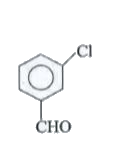Outline the preparation of the following compounds using a nucleophilic substitution reaction : C6H5CH2OCOCH3.
To prepare the compound C6H5CH2OCOCH3 using a nucleophilic substitution reaction, we can follow these steps:
Step 1: Identify the Components
First, we need to identify the components of the target compound. The compound can be broken down into two parts:
- The benzyl group: C6H5CH2−
- The acyl group: OCOCH3 (which is derived from acetic acid)
Step 2: Prepare Silver Acetate
We will use silver acetate as a nucleophile. The structure of silver acetate can be represented as:
- CH3C(=O)OAg or CH3C(=O)O− with Ag+.
Step 3: Prepare Benzyl Bromide
Next, we need to prepare benzyl bromide, which has the structure:
- C6H5CH2Br
Step 4: Nucleophilic Substitution Reaction
Now, we will perform the nucleophilic substitution reaction:
1. The silver acetate will react with benzyl bromide.
2. In this reaction, the bromine atom (Br) will be displaced by the acetate ion (OAc-).
3. The acetate ion will act as a nucleophile and attack the carbon atom attached to the bromine, leading to the formation of a carbocation.
4. The acetate ion will then bond with the carbocation, resulting in the formation of the desired compound.
Step 5: Final Product
The final product will be:
- C6H5CH2OCOCH3
Step 6: By-products
During this reaction, silver bromide (AgBr) will also be formed as a by-product.
Summary of the Reaction
The overall reaction can be summarized as:
- C6H5CH2Br+CH3C(=O)OAg→C6H5CH2OCOCH3+AgBr
First, we need to identify the components of the target compound. The compound can be broken down into two parts:
- The benzyl group: C6H5CH2−
- The acyl group: OCOCH3 (which is derived from acetic acid)
We will use silver acetate as a nucleophile. The structure of silver acetate can be represented as:
- CH3C(=O)OAg or CH3C(=O)O− with Ag+.
Next, we need to prepare benzyl bromide, which has the structure:
- C6H5CH2Br
Now, we will perform the nucleophilic substitution reaction:
1. The silver acetate will react with benzyl bromide.
2. In this reaction, the bromine atom (Br) will be displaced by the acetate ion (OAc-).
3. The acetate ion will act as a nucleophile and attack the carbon atom attached to the bromine, leading to the formation of a carbocation.
4. The acetate ion will then bond with the carbocation, resulting in the formation of the desired compound.
The final product will be:
- C6H5CH2OCOCH3
During this reaction, silver bromide (AgBr) will also be formed as a by-product.
The overall reaction can be summarized as:
- C6H5CH2Br+CH3C(=O)OAg→C6H5CH2OCOCH3+AgBr
Topper's Solved these Questions
- HALOALKANES AND HALOARENES BOOK - ICSECHAPTER - HALOALKANES AND HALOARENES EXERCISE - ISC EXAMINATION QUESTIONS
4 Videos
- HALOALKANES AND HALOARENES BOOK - ICSECHAPTER - HALOALKANES AND HALOARENES EXERCISE - MULTIPLE CHOICE QUESTIONS
29 Videos
- HALOALKANES AND HALOARENES BOOK - ICSECHAPTER - HALOALKANES AND HALOARENES EXERCISE - EXERCISE (PART - II DESCRIPTIVE QUESTIONS) (SHORT ANSWER QUESTIONS)
94 Videos
- GENERAL PRINCIPLES AND PROCESSES OF ISOLATION OF ELEMENTS BOOK - ICSECHAPTER - GENERAL PRINCIPLES AND PROCESSES OF ISOLATION OF ELEMENTS EXERCISE - EXERCISE (PART-I ( OBJECTIVE QUESTIONS )) (Fill in the blanks)
60 Videos
- ISC QUESTION PAPERBOOK - ICSECHAPTER - ISC QUESTION PAPEREXERCISE - PART-II(SECTION-B)
74 Videos
Similar Questions
Knowledge Check
Identify the compounds that will undergo nucleophilic aromatic substitution reaction :
A B
B C
C D
D
Outline the preparation of the following compounds using a nucleophilic substitution reaction : CH3C≡CCH2CH3
View SolutionOutline the preparation of the following compounds using a nucleophilic substitution reaction : CH3CH2CH2N(CH3)2
View SolutionOutline the preparation of the following compounds using a nucleophilic substitution reaction : CH3CH2−O−N=O
View SolutionOutline the preparation of the following compounds using a nucleophilic substitution reaction : CH3OC(CH3)3
View SolutionOutline the preparation of the following compounds using a nucleophilic substitution reaction : CH3CH2CH2CH2NO2.
View SolutionWhich of the following reactions is an example of nucleophilic substitution reaction?
View SolutionWhich of the following reactions is an example of nucleophilic substitution reaction?
View Solution
